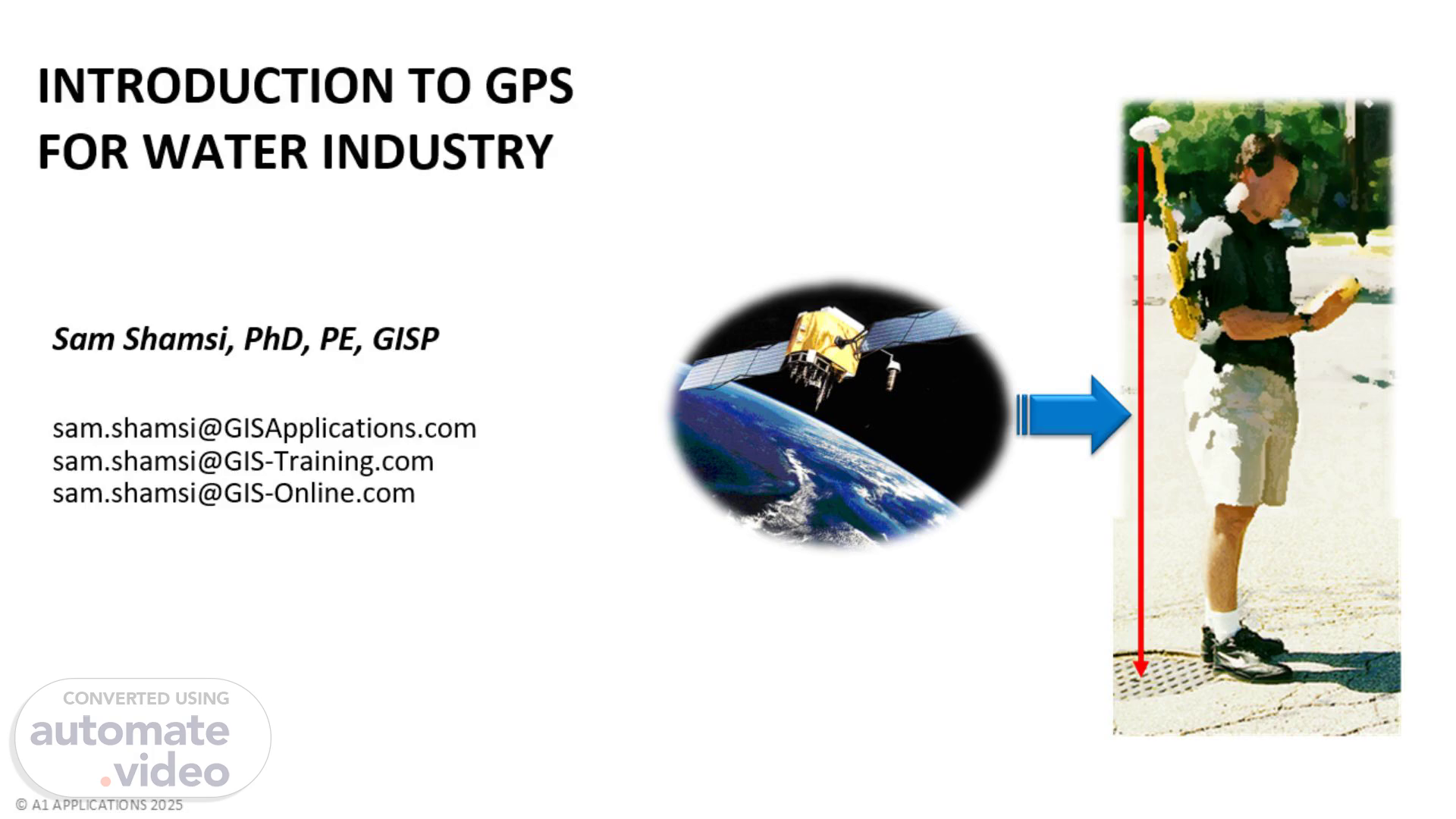Scene 1 (0s)
[Audio] Good morning and welcome to my Global Positioning System (G-P-S--) course. My name is Sam Shamsi and I am joining you from Pittsburgh, Pennsylvania – one of the most beautiful and livable cities in the United States. Note the picture on this slide which perfectly reflects what you will learn in this course. This man is doing a G-P-S survey of sewer system manholes. He has a G-P-S receiver in his backpack and a hand held data collector in his hand. The red arrow is drawn to show that the G-P-S receiver antenna in his backpack is CORRECTLY pointing to the center of the manhole. This is the correct way of doing a manhole G-P-S survey. My Email address is right here for any follow up questions you may have after today’s class..
Scene 2 (45s)
[Audio] Learning Objectives of this course are: Achieve a basic understanding of G-P-S technology. Describe GPS’s relation to G-I-S-. Discover the applications of G-P-S technology. Classify the G-P-S equipment types. Identify the G-P-S survey steps..
Scene 3 (1m 2s)
[Audio] Fleet Management G-I-S and G-P-S applications have consistently lowered the cost of fleet management by 10-15%. An efficient fleet management system is essential to improve customer service. A wireless system that uses G-I-S and G-P-S technologies can substantially and economically improve the efficiency of fleet management. An integrated GIS/GPS system can be used to track multiple moving vehicles from a command center. It can show the location, speed and movement of each vehicle on the tracking display. Off the shelf mobile devices such as smart phones and tablets can be used in conjunction with a GIS/GPS to provide the information needed for fleet management such as, dispatching and tracking the maintenance vehicles, generating driving directions, and trip routing. The benefits? More efficient routing, fuel savings, less downtime, improved driver accountability, and real time vehicle tracking. It’s a powerful system that ties together G-P-S--, vehicle diagnostics, and smart software..
Scene 4 (2m 9s)
[Audio] Let’s take a quick look at how fleet management works from a hardware perspective. Fleet management is essentially about coordinating company vehicles to boost efficiency, cut costs, and ensure safe operations. Each vehicle in the fleet is equipped with a G-P-S tracker. This tracker logs the vehicle's real time location continuously. There's also a connection to the vehicle’s OBD-II port, which monitors things like engine performance, fuel use, and speed. A communication module—usually cellular or satellite—sends all that data back to a central server. That’s where the cloud platform comes in. It processes and stores the data so it can be visualized. Fleet managers then use a dashboard on their computer, tablet, or smartphone to view this information on a map—live. This setup is used in many sectors—delivery trucks, public buses, utility services, and field crews..
